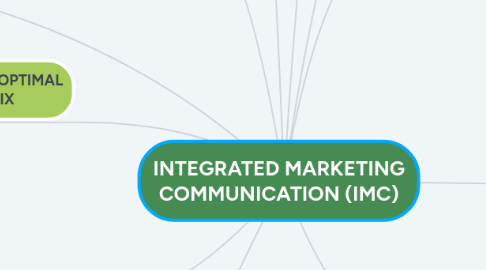
1. OBJECTIVE OF PROMOTION
1.1. Provide information to consumers and others
1.1.1. Inform the availability of goods and service
1.2. Increase demand
1.2.1. Increase primary demand
1.2.2. Increase selective demand
1.3. Differentiate the product
1.3.1. Compare the product with other competitors
1.4. Accentuate the product's value
1.5. Stabilize sales
2. ELEMENTS OF THE PROMOTIONAL MIX
2.1. Personal selling
2.1.1. Interpersonal influence process involving a seller's promotional presentation conducted on a person-to-person basis with the buyers
2.2. Non-personal selling
2.2.1. Advertising
2.2.1.1. Any paid, nonpersonal communication through various media
2.2.2. Product placement
2.2.2.1. Marketer pays a motion picture or television program a fee to display product in the fil
2.2.3. Sales promotion
2.2.3.1. Marketing activities other than personal selling, advertising, guerilla marketing, and public relations that stimulate consumer purchasing and dealer effectiveness
2.2.4. Direct mareting
2.2.4.1. Direct communications to a consumer or business recipient
2.2.5. Public relations and Publicity
2.2.5.1. Firm's communications and relationships with its various publics
2.2.6. Guerilla marketing
2.2.6.1. Unconventional, innovative, and low-cost marketing technique
3. SPONSORSHIPS
3.1. Sponsorship spending
3.2. Growth of Sponsorship
3.3. How sponsorship differs from advertising
3.4. Assessing sponsorship results
4. DEVELOPING AN OPTIMAL PROMOTIONAL MIX
4.1. Nature of the market
4.2. Nature of the product
4.3. Stage in the product life cycle
4.4. Price
4.5. Funds available for promotion
5. BUDGETING FOR PROMOTIONAL STRATEGY
5.1. Percentage-of-sales method
5.1.1. Set as a specified percentage of either past or forecasted sales
5.2. Fixed-sum-per-unit method
5.2.1. set as a predetermined dollar amount for each unit sold or produced
5.3. Meeting competition method
5.3.1. set to match competitor's promotional outlays on either an absolute or relative basis
5.4. Task-objective method
5.4.1. Once marketers determine their specific promotional objectives, the amount of promotional spending needed to achieve them is determined
6. THE VALUE OF MARKETING COMMUNICATION
6.1. Social importance
6.2. Business importance
6.3. Economic importance
7. IMPORTANT OF TEAMWORK
7.1. Save time, money and effort
7.2. Increase marketing effectiveness
8. THE COMMUNICATION PROCESS
8.1. It gains the receiver's attention
8.2. It achieves understanding by both receiver and sender
8.3. It stimulates the receiver's needs and suggests an appropriate method of satisfying them
9. DIRECT MARKETING COMMUNICATIONS CHANNELS
9.1. Direct mail
9.1.1. Communications in the form of sales letters, postcards, brochures, catalogs
9.2. Catalogs
9.3. Telemarketing
9.4. Direct marketing via broadcast channels
9.4.1. Television, radio, home shopping channels, informercials
9.5. Electronic direct marketing channels
9.5.1. Web advertising
9.6. Other direct marketing channels
9.6.1. Newspaper, magazines
10. PULLING AND PUSHING PROMOTIONAL STRATEGIES
10.1. Pulling strategy
10.1.1. Promotional effort by the seller to stimulate final-user demand
10.2. Pushing strategy
10.2.1. Promotional effort by the seller directed to the members of the marketing channel
